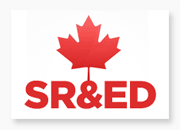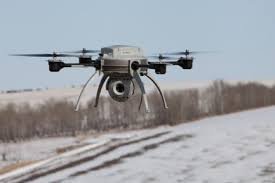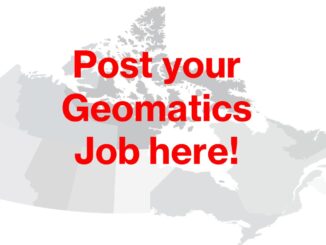

GIS companies regularly create new geospatial products and develop new processes to do things better. Such innovations might be eligible to claim the SR&ED (Scientific Research & Experimental Development) tax credit.
The Canadian SR&ED program is government initiative. It has been around since the 80s. It aims to encourage Canadian companies to do scientific research or experimental development by giving them cash payments or tax credits.
Not only basic and applied research and experimental development is eligible but so is work that directly supports these types of work. Geospatial work whether it is engineering, design, computer programming, data collection, testing, etc. is eligible.

To be eligible the applicant must show what they did had a technological uncertainty that could not be removed by standard geospatial practice, i.e. it needed some novel method to overcome. The applicant must also demonstrate that they formulated a hypothesis to overcome the problem, i.e. they thought of a strategy that can be checked by experimental work. Third, the application must show that a scientific method was used to work on the problem. This involves checking the hypothesis by doing experimental work, gaining insights from its results, coming up with new hypothesis and repeating the process until the work was done. Once the work is done, the claimant needs to show any technological advancement that was achieved. The experiment does not have to be successful to claim SR&ED. Even if one was able to demonstrate that a method did not work and could be eliminated for the solution that is enough technological advancement. Finally , documentation of all the work must be kept as the work progressed. The CRA documents SR&ED eligibility is great detail here.
Geospatial companies can claim expenditures they made on the salaries of their employees, material costs (consumed materials as well as transformed materials), subcontractors’ fees as well as third—party payments.

Canadian geospatial companies have the choice to make sense of the SR&ED documentation and file a claim themselves. There are two parts of the SR&ED claim. One is the technical narrative, which must be written in a limited word count format describing the eligibility of the SR&ED claim as described above. The second is the accounting of the expenditures. The CRA has the right to ask for a SR&ED review in which it asked questions to verify the claim.
The second choice that geospatial companies have is to seek professional help. They can choose either accounting firms dealing with SR&ED, SR&ED firms which cover a number of fields including geospatial or an independent SR&ED Consultant who works in geospatial projects. These entities file the SR&ED claim and defend their clients in the case of CRA reviews. The charges are usually on a contingency basis. The consulting firms get paid a percentage only if their claims are successful. Here is some advice regarding how to choose the best SR&ED consultant.





Be the first to comment